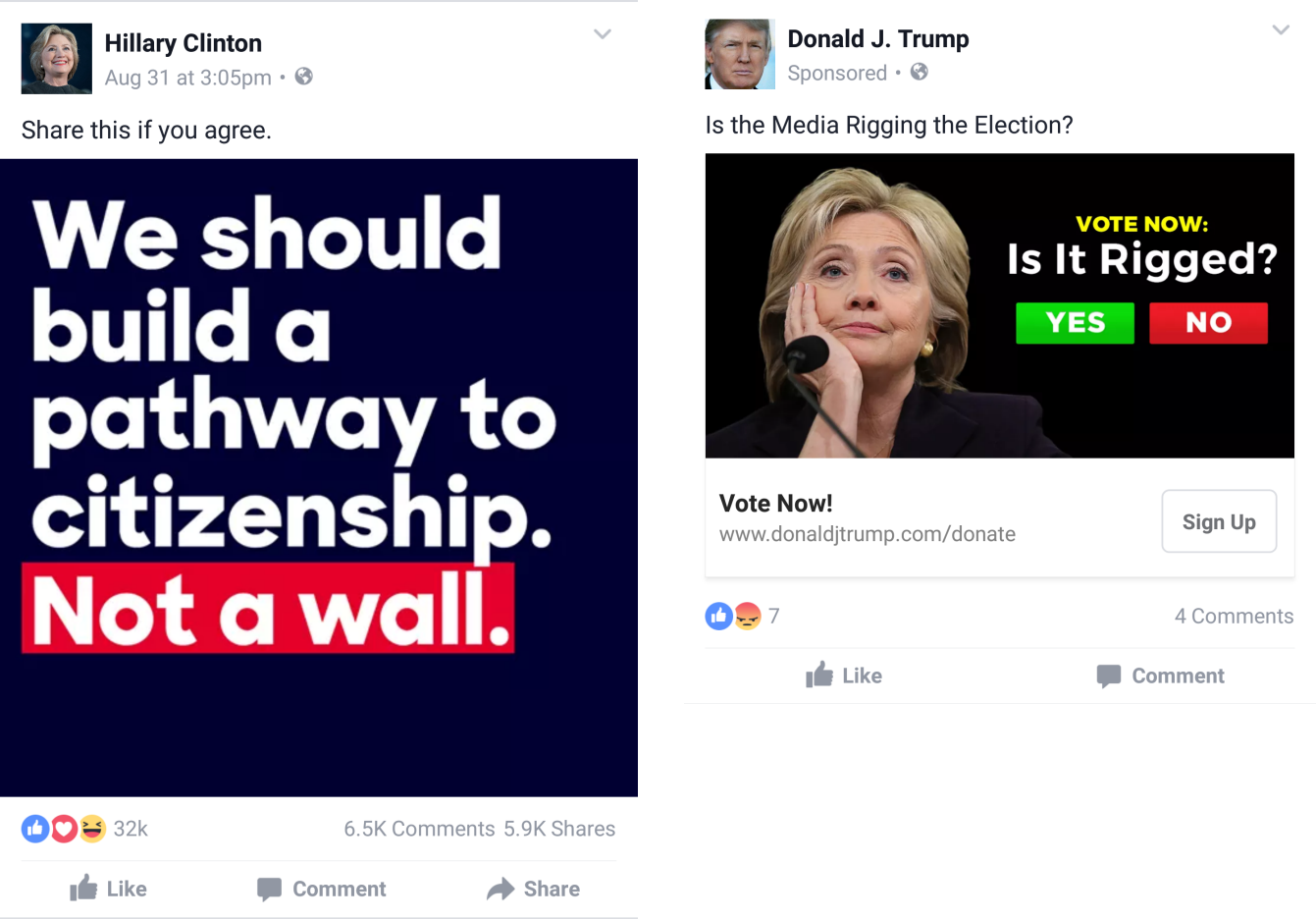Facebook, The Election, & How To Target Potential Voters
By Karen Huntoon
Lead Digital Strategist
As Election Day approaches, Facebook closes the loop for voter decision making.
The first presidential debate is set to take place on Sept. 26, 2016 in Hempstead, N.Y. As we approach that highly-anticipated day, TV, Print, and Direct Mail ads will continue to play an important role in introducing candidates to voters, particularly early on in the campaign cycle. However, beyond the first debate, as we approach Election Day, voters will move through a decision-making process where Facebook plays a very important role.
The most obvious way is that Facebook is a great means to quickly continue political campaign messaging up until the last voting minute where a significant amount of voters are spending their time.
Rhetoric and opinions of the candidates aside, both Trump and Clinton have been utilizing both paid and organic avenues to rally up their respective bases:

More unexpectedly, since 2008 Facebook has displayed an “I Voted!” button like this on every major Election Day.

If you tell Facebook you voted, your name and picture appear near the button when other friends view it, and it encourages your friends to go out and vote as well
In 2010, researchers at the University of California used the button and internal Facebook data to conduct a “61-million-person experiment in social influence and political mobilization.” They found that someone was 0.39 percent more likely to vote if they were told by Facebook that their friends had voted. Because of the social ripple effects of this, they concluded that more than 340,000 additional votes were cast in that midterm election because of the “I Voted!” button.
Jump to Section
Targeting Potential Voters
For campaigns, both local and national, the question is: How do you find voters most likely to vote for your campaign on Facebook?
The first option is to use Facebook’s own political elements. Facebook makes a deduction about users political views based on the pages they like, or on political preference, if one was stated on their profile page. For example, if a Facebook user likes the page for Hillary Clinton, Facebook might categorize that individual as a liberal.
In the event that an individual does not like any candidates’ page, Facebook looks to what other pages you like, the political preference of others who like those pages, and assumes your personal political preference. For example, if you like Ben and Jerry’s Ice Cream’s Facebook page, and most of the people who also like that page identifies as liberal, then Facebook might also classify you as Liberal.
For a more exact approach, there is a more advanced solution that may yield better results. It’s called Audience Onboarding, and it involved uploading a mailing list of potential voters to Facebook. Individuals on this list are matched to their Facebook profiles, by their name and mailing address, and Facebook will only serve ads to these individuals. This method is particularly advantageous because it allows you to use real, offline voter data to target, which will be much more precise.
When this process is combined with other direct marketing tactics and data, you will know for certain that you are only reaching those most likely to be receptive to your message.
Contact us for more information on Audience Onboarding.
About LiftEngine
Since 2005, LiftEngine's primary mission has been to help clients better understand and connect with their most responsive prospects and customers, online or offline. Our expertise is behind the marketing campaigns of 400+ clients.
Behind LiftEngine is LiftBase, our proprietary addressable consumer database. Comprised of 250 million US consumers, 140 million US households, and 1,000+ enhanced data elements, LiftBase powers our audience development services and industry-leading products, PortalLink and LaunchPad.
Published on Sep. 02, 2016, Last Updated on Nov. 08, 2023